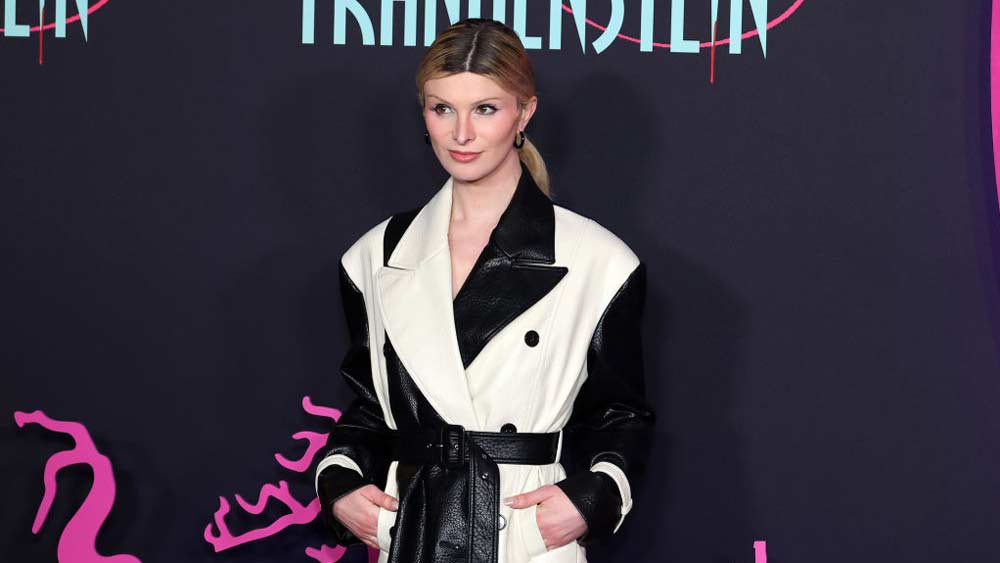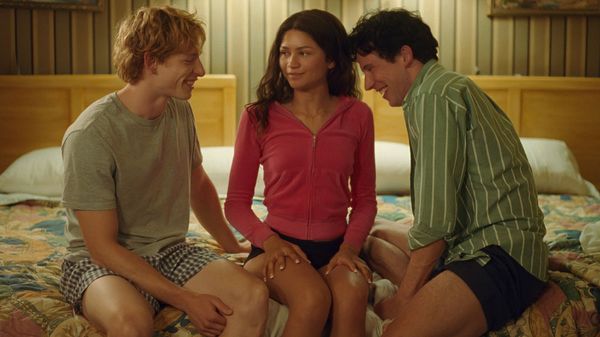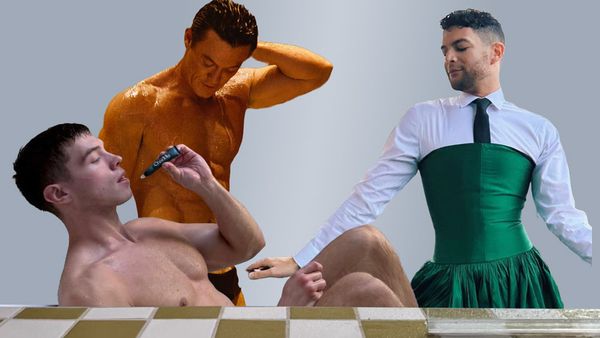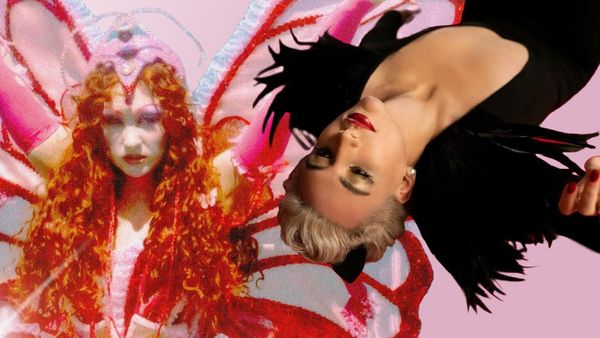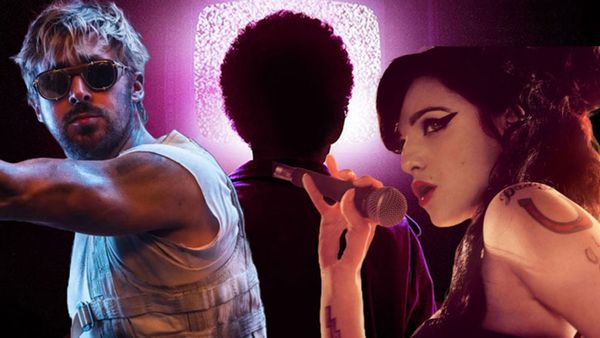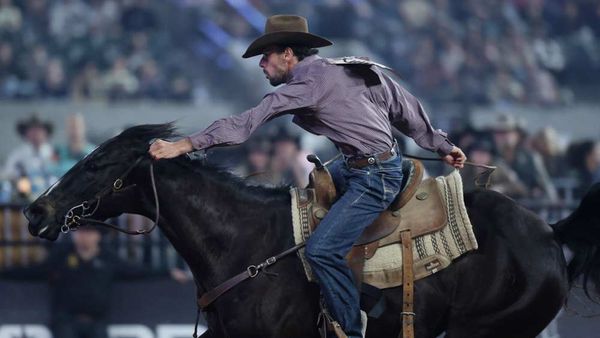March 11, 2011
MOCA Shows Rodarte's "Black Swan" Tutus in Art Exhibit
Robert Doyle READ TIME: 4 MIN.
WEST HOLLYWOOD, Calif. (AP) - The black tutus from "Black Swan" twirl slowly, almost dancing with six other black feather-trimmed Rodarte dresses that hang suspended on invisible mannequins beside them.
The white tutus from the film spin beside other white dresses layered with pearls, lace, silk chiffon, cotton cheesecloth and embroidered gauze. Long fluorescent tubes animate the display in white, red and black light, illuminating "Rodarte: States of Matter," a new exhibit at the Museum of Contemporary Art that opens Friday.
"I definitely see something very different when I look at them in this way," says Kate Mulleavy, who founded Rodarte six years ago with her sister Laura. They share design duties. "The experience of dressing people and doing shows is such an incredible, thrilling experience, because clothes take on a different life and I always say people transform them, but to see them in this way makes you kind of confront and look at the actual garment in a different way."
The tutus that Oscar-winner Natalie Portman wore in "Black Swan" stand out among the ornate frocks. Each of the six tutus featured looks like a delicate sculpture, all layered tulle underneath and a celebration of textures - feathers, beads, embroidered vinyl, silk netting and Swarovski crystals - on top.
"We were just inspired by the idea of objects and clothing as objects and wanting to play with that idea," Laura says. "I think it lets you look at things in a different way, and lets you reflect on your own work and the way you interact with your body of work. It's kind of interesting."
The tutus brought the designers a new awareness of the sculptural elements of their work, which already boasted runway collections based on the condor, hardwoods and the American heartland, among others. But they had never made garments quite like this before signing on for "Swan," their first venture into costume design, and the whole process was made more challenging by the lack of real examples available.
"Archival tutus are something that every ballet troupe, they store and keep and they're like prized possessions," Laura says. "And they're very expensive, so a beautiful one is very hard to come by."
The Mulleavys read and researched and experimented, carrying on with their signature approach of mixing and draping a variety of fabrics, from fine silks to simple gauze. Seen in the context of the exhibit, the tutus are clear cousins of the black and white collections that preceded them in spring and fall of 2010.
"I think you can see a nice lineage in the making," says MOCA's associate curator Rebecca Morse. "They're all in conversation with each other." Without traditional mannequins, there's nothing to distract from the detailed designs.
"We wanted for these dresses to float and have a life of their own," says exhibition designer Alexadre de Betak, who also produces runway shows for Rodarte and other couture brands.
To preserve the form of the designs, each sits on a poured resin mannequin of sorts that becomes nearly invisible inside the dress. The spinning tutus and changing lights in the museum bring life and movement to the display.
Black light on the white collection shows "the intricate work inside the dresses and brings out the ghostly effect I think these dresses have," de Betak says. Red lights make one blood-stained tutu and its sister red-and-white dresses gape in colors of an unclosed wound.
"This exhibition is a mix of Rodarte's inspirations of good and bad, ugly and beautiful, soft and hard, and about their costumes for 'Black Swan,' which is about the same duality," he says. He echoed that in the exhibit's design and lighting, "which goes from soft and pretty to kind of punchy and flashy and all black light and very bloody."
Though the black dresses and tutus are shown in muted light, the varied textures are so visible they almost beg to be touched.
"One of the great things is: How often do you see these up close?" Morse says. "They're not in vitrines. You can really get very close to them here and really see them, and I think that's huge for the public. All these dresses demand closer inspection."
This is not the first time Rodarte has found itself in an art museum. The Mulleavys' designs were exhibited last year at the Smithsonian's Cooper-Hewitt National Design Museum. But it's the first time Rodarte fashions are being shown on the West Coast, close to suburban Pasadena, where the sisters live.
"MOCA has a huge cultural impact on California and the world, so to do something here is really amazing," Kate says.
Equally amazing is the opportunity to see their designs as art objects.
"I think the biggest realization of that, almost in a strange way, is holding a tutu," she says, "because you feel like you're holding this strange object and it's got a life of its own."
___
Online:
Long-term New Yorkers, Mark and Robert have also lived in San Francisco, Boston, Provincetown, D.C., Miami Beach and the south of France. The recipient of fellowships at MacDowell, Yaddo, and Blue Mountain Center, Mark is a PhD in American history and literature, as well as the author of the novels Wolfchild and My Hawaiian Penthouse. Robert is the producer of the documentary We Are All Children of God. Their work has appeared in numerous publications, as well as at : www.mrny.com.

